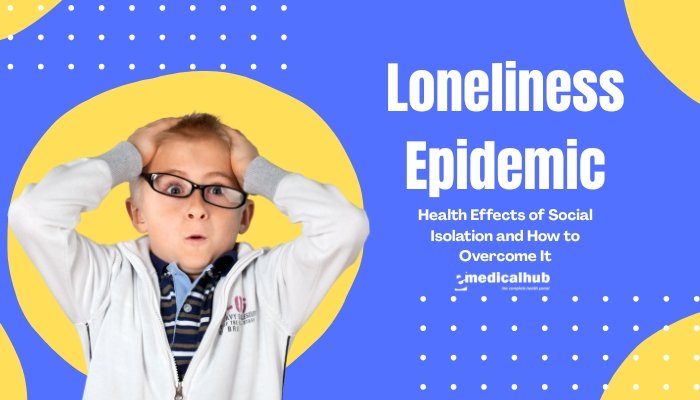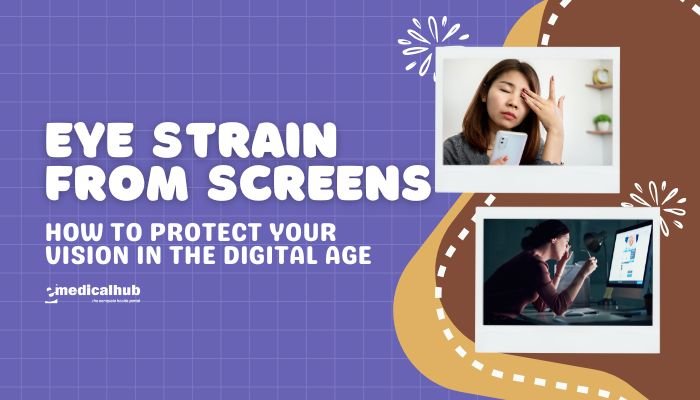Introduction
Loneliness might be as old as civilization itself, but current statistics signal an unprecedented “loneliness epidemic.” Despite being more connected than ever through technology, many people experience a pervasive sense of social isolation.
Whether it stems from busy lifestyles, remote work, shifting family structures, or personal circumstances, loneliness is more than an emotional ache—it poses a serious health concern that can affect mental well-being, physical health, and even longevity.
This article explores the growing crisis of loneliness and social isolation, examining the causes, the profound health consequences, and evidence-based methods to overcome it. We’ll break down how loneliness differs from being physically alone, the psychological and physiological toll it exacts, and practical approaches to reconnect with others.
While human beings are hardwired for connection, the modern world can hinder meaningful contact. Understanding the roots and real risks of loneliness is the first step toward rebuilding social bonds and reclaiming a sense of belonging.
Disclaimer: The information here is for educational purposes and not a substitute for professional medical or psychological advice. If you’re experiencing severe or persistent feelings of loneliness or other mental health challenges, consult a qualified healthcare professional for personalized support.
Defining Loneliness and Social Isolation
What Is Loneliness?
Loneliness is often described as the subjective feeling of being disconnected from others, regardless of how many people are physically around. You can feel lonely in a crowd if you lack meaningful relationships, or not feel lonely at all if you’re comfortable in solitude. Loneliness revolves around one’s perceived deficiency in the quality or quantity of social ties.
Key points:
- Emotional Distress: Loneliness typically includes sadness, emptiness, or longing for connection.
- Subjective Experience: Someone with multiple acquaintances may still feel lonely if they desire deeper bonds.
- Temporary vs. Chronic: Many people occasionally feel lonely, but chronic loneliness extends over months or years.
Social Isolation vs. Solitude
- Social Isolation: Objective lack of contact with others, such as living alone or having a minimal support network. Not everyone who’s socially isolated feels lonely, but it can increase vulnerability.
- Solitude: Deliberately spending time alone can be healthy or even beneficial if chosen for rest or reflection. The difference lies in choice and satisfaction level—solitude can be peaceful, whereas isolation is typically involuntary or underscored by dissatisfaction.
Why Is Loneliness Increasing?
The “loneliness epidemic” has been linked to:
- Shifts in Family and Living Arrangements: More people living alone, smaller families, or families spread out geographically.
- Digital Replacements for In-Person Interaction: While social media can maintain connections, it sometimes fosters superficial engagement rather than genuine closeness.
- Work Culture and Commuting: Long work hours, remote setups, or stressful jobs can reduce time for socializing.
Scope of the Problem
Global Statistics
- Extensive Prevalence: Surveys by the Kaiser Family Foundation and other organizations show that in some countries, up to 1 in 5 adults reports feeling lonely or socially isolated consistently.
- Generational Spread: Contrary to assumptions that older adults are the loneliest, younger generations (Gen Z, Millennials) also report high loneliness levels.
- Cultural Differences: Societies emphasizing individualism may see higher rates of social disconnection, though loneliness can occur anywhere.
Financial and Societal Impact
- Healthcare Burden: Studies have associated loneliness with greater usage of healthcare services, partly due to increased morbidity and mental health needs.
- Workplace Consequences: Loneliness can hinder productivity, creativity, and job satisfaction, leading to higher turnover or absenteeism.
Health Effects of Chronic Loneliness
Mental Health Consequences
- Depression and Anxiety: Lack of social support can intensify negative thought patterns. Feelings of isolation perpetuate depressive symptoms.
- Stress and Coping: Without reliable confidants, daily stressors might become overwhelming, elevating anxiety.
- Low Self-Esteem: Persistent loneliness can lead to self-doubt or a sense of unworthiness.
Physical Health Implications
- Cardiovascular Risk: Chronic loneliness correlates with higher blood pressure, heart disease risk, and reduced immunity.
- Inflammatory Markers: Research suggests isolation can trigger increased inflammatory responses in the body.
- Greater Mortality Risk: Meta-analyses show that strong social connections equate to better survival rates, while isolation can be as detrimental as obesity or smoking.
Cognitive Decline
Especially in older adults, loneliness may accelerate cognitive decline, potentially increasing vulnerability to dementia and memory problems. Social stimulation is believed to keep the brain active and resilient.
Overcoming Loneliness: Evidence-Based Strategies
Recognize and Acknowledge
- Self-Awareness: Identify that feelings of loneliness are real and valid. Denial can hinder finding solutions.
- Distinguish Between Temporary vs. Chronic: Some life transitions (e.g., moving, new job) might cause short-lived loneliness. Chronic loneliness signals a deeper challenge.
Strengthen Existing Bonds
- Reach Out to Close Friends or Family
- Schedule regular calls or meetups. Suggest a weekly dinner or activity.
- Express appreciation to deepen closeness. Communication fosters emotional support.
- Quality Over Quantity
- A few trusted confidants can be more beneficial than numerous superficial acquaintances.
- Focus on authenticity and vulnerability to cultivate deeper, supportive relationships.
Develop New Connections
- Join Groups or Clubs
- Local sports teams, book clubs, or hobby-based meetups allow organic interactions around shared interests.
- Volunteering can also yield a sense of purpose and social contact.
- Online Communities
- Virtual forums or interest-based groups can be stepping stones, especially if physically meeting is tough.
- Balanced usage is key: ensure offline connections too.
- Professional Networking
- If workplace isolation is an issue, try coworking spaces, mentorship programs, or industry events.
Therapies and Counseling
- Cognitive Behavioral Therapy (CBT): Helps reframe negative beliefs about oneself or social interactions.
- Group Therapy: Facilitates a shared environment to practice social skills, empathy, and building new relationships.
- Interpersonal Therapy: Focuses on improving communication patterns and addressing relational conflicts that feed isolation.
Adopt a Pet
Pets (dogs, cats) can diminish loneliness through companionship and emotional bonding. Their unconditional presence encourages daily routine and offers tactile comfort. For some, caring for an animal fosters a sense of meaning and structure.
Lifestyle Measures Supporting Social Connection
Physical Exercise and Health
Regular exercise, especially in group settings (like fitness classes or hiking clubs), fosters camaraderie. Additionally:
- Endorphin Release: Physical activity counters stress hormones and improves mood, making people more receptive to socializing.
- Energy and Confidence: Feeling physically healthier can alleviate self-consciousness that sometimes fuels isolation.
Mindfulness and Self-Compassion
- Mindfulness: Recognize negative self-talk or feelings of loneliness without judgment, potentially lessening rumination.
- Self-Compassion: Acknowledge that loneliness is common and not a personal failing. This kinder self-dialogue can reduce shame and encourage outreach.
Balanced Technology Use
While technology can connect or isolate, thoughtful usage includes:
- Video Calls with Loved Ones: More personal than text messages, fostering real-time emotional exchange.
- Social Media Boundaries: Overuse can amplify feelings of inadequacy or FOMO. Be mindful of the content and your emotional reaction.
- Apps for Social Meetup: Tools that link local interest groups or events might help.
Workplace Solutions to Combat Loneliness
Encouraging Team Collaboration
For organizations:
- Team-Building Activities: Encourage employees to form meaningful relationships.
- Mentorship Programs: Pair newcomers with experienced staff for guidance and social integration.
Remote Work Considerations
- Virtual Social Hours: Zoom coffee breaks, Slack channels for casual chat can reduce remote isolation.
- Hybrid Models: Occasional in-person gatherings can preserve personal connections.
- Managerial Support: Encourage flexible schedules but check in regularly with remote employees about well-being.
Culture of Support
- Open Communication: Supervisors showing empathy and interest in employees’ mental health fosters belonging.
- Resource Sharing: Provide or subsidize mental health resources, from EAP services to workshops on building resilience.
Myths and Facts
- Myth: “Only older adults or singles are lonely.”
- Fact: Loneliness can occur at any age and in any marital status. Married individuals can still feel lonely if emotional intimacy is missing.
- Myth: “Social media eliminates loneliness.”
- Fact: Virtual connections can help but also cause superficial interactions. Authentic offline or deeper relationships matter.
- Myth: “Being alone means you’re lonely.”
- Fact: Some solitude is normal and healthy. Many thrive in me-time without feeling lonely if they have fulfilling relationships otherwise.
Case Studies and Personal Vignettes
- College Student (19, M): Left home for university, struggles with forming new friendships, experiences intense loneliness in the dorm. Joins a campus club and starts therapy group. Over a semester, sees significant improvement in mood and sense of belonging.
- Remote Employee (35, F): Works from home, rarely meets colleagues in person. Over time, feels isolated, leading to burnout signs. Implements regular coworking day, organizes a local work buddy group, regains feeling of community.
- Retiree Widow (70, F): Facing social isolation after spouse’s death, noticing deteriorating health. Volunteers at a library, signs up for a seniors walking group, establishing new social circles and feeling less lonely over months.
Frequently Asked Questions (FAQ)
- I’m shy—how can I start building new friendships?
Begin with small steps. Join low-pressure community groups or volunteer for shared interests. Online friend-finding apps or local meetups often help shy individuals. Gradually expand comfort zones. - What if I feel guilty about needing help for loneliness?
Loneliness is not a personal flaw. It’s a universal emotion. Professional counselors or therapy groups can provide tools to reconnect. - Are phone calls as good as in-person hangouts?
In-person contact fosters deeper connection, but phone or video calls are still beneficial and can reduce isolation. Even small interactions can count. - How long does it take to overcome chronic loneliness?
Timelines vary; building trust and relationships can be a process of months or more. Consistent efforts, plus possibly therapy, expedite the shift toward a supportive social network. - How can I help a lonely friend or family member?
Reach out proactively, invite them to join events or check in regularly. Encourage them to explore groups, counseling, or mindful practices. A small but sincere gesture can mean a lot.
Conclusion
Loneliness is a growing public health issue, correlating strongly with mental distress, physical health decline, and reduced life satisfaction. While technology and modern lifestyles can inadvertently fuel social isolation, hope remains: humans remain inherently social, capable of forging new connections and restoring older ones. Overcoming loneliness requires awareness, a willingness to seek or accept help, and sometimes changes in environment or mindset.
By combining steps like revitalizing existing friendships, finding new social outlets, prioritizing self-care, and leveraging professional therapy resources when needed, individuals can gradually dismantle the barriers of isolation. Employers and communities also have roles to play—through supportive policies, opportunities for collaboration, and outreach to vulnerable groups. Ultimately, humans flourish through meaningful contact, empathy, and shared experiences. Thus, addressing the loneliness epidemic fosters healthier individuals and a more cohesive society.
References
- Cacioppo JT, Cacioppo S. The growing problem of loneliness. Lancet. 2018;391(10119):426.
- Holt-Lunstad J, Smith TB, Baker M, et al. Loneliness and social isolation as risk factors for mortality: A meta-analytic review. Perspect Psychol Sci. 2015;10(2):227-37.
- Hawkley LC, Cacioppo JT. Loneliness matters: A theoretical and empirical review. Curr Dir Psychol Sci. 2010;19(2):71-75.
- WHO. Mental health action plan 2013–2030. World Health Organization, 2021.
- VanderWeele TJ, Hawkley L, Thisted RA, et al. A prospective study of social isolation, loneliness, and mortality in US older adults. Am J Epidemiol. 2019;188(1):39-48.
- Seppala E, Rossomando T, Doty JR. Social connection and compassion: important predictors of health and longevity. Soc Res. 2013;80(2):411-430.
- Burke T, Fry B, Blanchard T. Remote work, social isolation, and burnout risk. Occup Health. 2021;25(3):179-187.
- Holt-Lunstad J. Loneliness and social isolation as risk factors: Implications for interventions and policy. AMA J Ethics. 2020;22(10):E839-841.
- Masi CM, Chen HY, Hawkley LC, et al. A meta-analysis of interventions to reduce loneliness. Pers Soc Psychol Rev. 2011;15(3):219-66.
- https://www.apa.org/helpcenter/road-resilience
- National Institute on Aging. Social isolation, loneliness in older people pose health risks. 2022.
- World Happiness Report. 2021; Accessed 2023.






